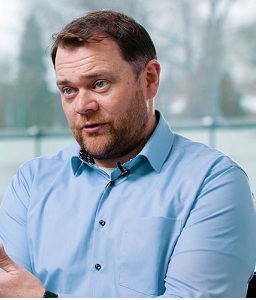For biopharmaceutical companies developing an injectable drug product, the transition from laboratory to in-human trials is one of the most important steps in their molecule’s early development. For organizations at this point in the drug development process, the pivot from preclinical development to clinical evaluation often comes with a shift in both operational goals and team mindset – away from the exploratory freedom of benchtop research, and toward strategic decision-making that will shape their product’s future.
This transition can be challenging for many organizations, especially when it comes time to fill the critical, cost- and time-sensitive batches of material they need to support their clinical trial.
For these customers, their molecule is often like their “baby.” They’ve been nurturing it in their laboratory for years, working in small volumes to study the basic structural, stability, and safety characteristics of their product. But when they shift their focus to in-human studies, the time comes to consider and plan for many more dimensions of that product candidate: not just how to produce a significantly larger volume, but how to do so in a manufacturing environment with consistent, high-quality, and scalable results.
“A successful clinical batch is all about striking the right balance of doing it efficiently, but also doing it right. Make sure you give yourself the time that you need.”
– Garath Duffy, Director of Supply Chain and Project Management, Vetter Development Service Rankweil
Developing this kind of fill finish process – one that reliably meets all safety and quality requirements for use in human trials – takes time, planning, and expertise. For savvy biopharma companies, it’s often the first project they pursue with a professional CDMO partner who can help them navigate the many new complexities that come into play at this critical point in their product’s development.
For many of these companies, the first challenge to overcome is often knowing where to start. At Vetter, we recommend focusing on four key areas of the clinical manufacturing process that can help put the company, its molecule, and trial on a path to success.
Where to focus first: Four key components of a successful early-stage fill finish project
Through our experience with many different organizations and molecules, we’ve mapped out a strategic approach to clinical manufacturing that helps our customers create a strong foundation for their product’s future. It focuses on four essential areas:
- Building a proactive plan, one that factors in a realistic schedule and a batch size that accommodates a range of testing and analytic steps in addition to the final filling volume.
- Preparing the product by conducting the important tests needed to assess the product’s safety, stability, and behavior outside the lab.
- Sourcing the right expertise, including regulatory/CMC, analytics, process development, project management, aseptic filling, quality, and more.
- Implementing best practices to ensure the batch complies with current good manufacturing processes (cGMPs).
As we’ve seen with many different products and their sponsors, starting with these critical components of the clinical manufacturing process can help biopharma teams get their clinical batch project off to a smart, strategic start – one that not only helps them efficiently pivot to the clinic, but also paves the way for successfully achieving future milestones.
Get access to these insights and more
Knowing how critical this pivot can be, the Vetter team recently released a new series of in-depth videos on how to approach and navigate the clinical manufacturing process. Now available on the Vetter Video Hub, this series covers a range of key topics like implementing cGMPs, selecting a product stability strategy, and sourcing specialized expertise for a clinical batch project.
Sign up here to explore these videos >
I had the pleasure of contributing to a video that outlines our strategic approach to filling clinical materials for in-human trials. If you enjoyed these insights, sign up at the Vetter Video Hub to watch the full video – and also get access to many more in-depth insights about clinical manufacturing.




















